This post was guest authored by Evan Fruehauf, Assistant Librarian in the Research & Instruction department at the Tampa Library
THE COOKBOOK
Today’s bake takes us back to 1908, when the Woman’s Club of Jacksonville, Florida published its Woman’s Club Cook Book, a 220-page community collection spanning everything from soups to “chafing dish recipes” to “diet[s] for the sick.” These early 20th-century cookbooks are more than just recipe compilations, they’re cultural documents of women’s lives, networks, and foodways.
The “Wisconsin Crumb Cake” was contributed by Margaret K. Somerville, who shared this comforting recipe with her fellow club members. Its presence in a Florida community cookbook demonstrates how recipes migrated across state lines, reflecting both personal ties and broader cultural exchanges. I found myself drawn to this relatively simple yet classic recipe as I was hopeful for a recipe that had a bit more guaranteed success.
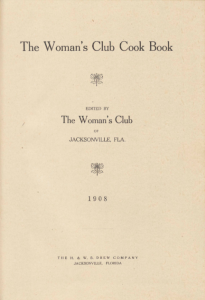
THE RECIPE
As with many turn-of-the-century cookbooks, the instructions are brief and assume a practiced cook.
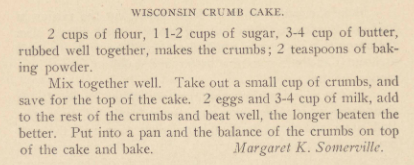
The Wisconsin Crumb Cake relies on:
- A simple batter of butter, sugar, eggs, and flour.
- A crumb topping of butter, sugar, and flour.
- Cinnamon listed as optional, leaving the spice up to the baker.
- A direction to bake in a “moderate oven”—a flexible phrase from the period, roughly 350°F today.
Modern Adjustments (for today’s kitchen):
- Oven: 350°F
- Bake time: 35 minutes
- Cooling: Let rest at least 20 minutes before slicing
- Cinnamon: Optional — include for warmth, or leave out for simplicity
Possible twists: chocolate drizzle, espresso dusting, or extra spice
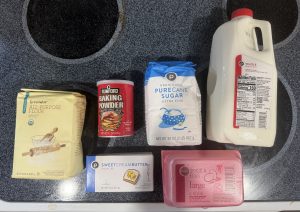
THE BAKE
The recipe’s minimal guidance meant making some assumptions. I set the oven to 350°F, mixed the batter by hand (no mixer required), and prepared the crumb topping. At 30 minutes, the center wasn’t quite set, so I extended the bake to 35 minutes.
The result? A cake that looked plain on the outside but promised more beneath the surface. After letting it cool for 20 minutes, I sliced in to find a soft, golden crumb that was ready to be tasted.
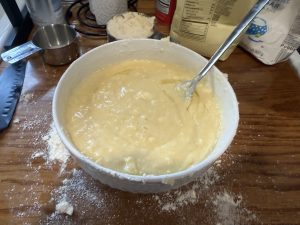

THE RESULTS
The inside was delightful—light, buttery, and simple, with each ingredient shining through. Without cinnamon, the flavor was gentle and versatile, but you could immediately see how a dash of spice—or even a drizzle of chocolate, a dusting of espresso powder, or a touch of cinnamon—would give it extra dimension.
What struck me most was how easy it was to bake. As a fairly novice baker, I found it forgiving and hard to mess up. It’s a recipe that invites adaptation while rewarding simplicity, making it an excellent entry point for anyone curious about baking from historic cookbooks.
Baking Margaret Somerville’s crumb cake was also a reminder of how these community collections functioned: not only as practical guides, but as personal testaments. Over a century later, her recipe still delivers comfort and joy.
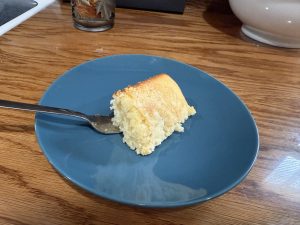
The Woman’s Club Cook Book holds far more than recipes—it preserves the voices and traditions of women whose everyday contributions rarely made it into history books. Each bake is a reminder that food connects us across time, turning the simple act of sharing cake into a celebration of community, resilience, and memory.
Explore more historic recipes:
- USF Libraries Digital Collections’ Historic Cookbook Collection
- Woman’s Club of Jacksonville Florida, “Woman’s Club Cook Book” (1908). Historic Cookbook Collection. 9.
Want to read more posts like this one?